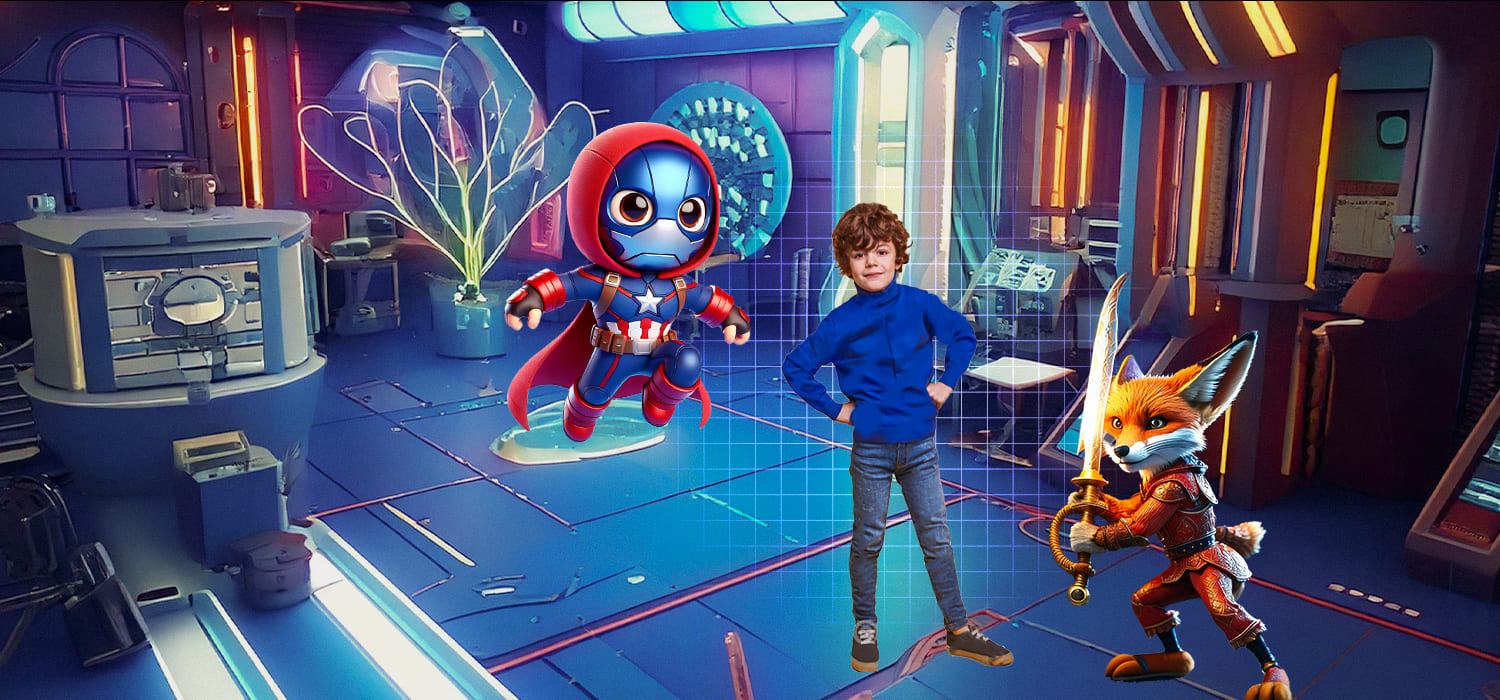
3D Holographic AR Coding & Game Design for Young
AGES: 8-10
LENGTH: 2 weeks
DESCRIPTION
Young Game Designers (Grades 3-5) will step into the imaginative and vibrant world of 3D game design at this camp.
This camp is fully accredited by the Accrediting Commission for Schools, Western Association of Schools and Colleges (ACS WASC).
No prior computer knowledge is needed. Students start with the basics and progress to designing fully interactive 3D Holographic Augmented Reality (AR) games, bringing their ideas to life.
Fun outdoor and indoor activities and plays are part of the camp experience.
In this camp, young designers will discover how to craft immersive 3D games, animating and rigging characters that leap off the screen and into action. Whether it’s creating epic quests inspired by Minecraft or Roblox, designing adventures with Pokémon-like companions, or building vibrant game environments like those in Super Hero, campers will transform their favorite games into interactive 3D Holographic AR experiences.
With Holographic AR, students step into their game worlds. Imagine battling mischievous 3D villains, exploring enchanted castles, or teaming up with 3D characters they design. The immersive dimension of Holographic AR allows students to engage directly with their creations, turning every coding session into an unforgettable adventure.
Students will master foundational skills like 3D modeling, animation, Scratch coding, and UI/UX design. They’ll also learn advanced techniques like creating and animating human models and rendering breathtaking 3D game environments. Through the Stanford Design School-inspired Design Thinking process, they’ll learn how to approach problems creatively and collaboratively, crafting games that are not only fun but also meaningful and unique.
Modules for this camp:
- Introduction to Holographic AR Coding and Design
- Game Design Strategies
- Interactive Storytelling
- AR 2D Game Design
- Introduction to 3D Modeling
- Basics of 3D Animation
- 3D AR Coding and Game Design
- Creation of Their Own 3D AR Game
What makes 3D Holographic AR Game Design magical?
Unlike traditional game creation, 3D Holographic AR Game Design invites students to step into their games, making the experience more vivid, hands-on, and inspiring. Imagine teleporting into a virtual jungle to help your 3D hero solve puzzles or teaming up with your custom-designed sidekick to battle animated villains. This immersive approach brings games to life, creating a tangible connection between students and their work.
The integration of 3D design and animation adds depth and realism to their creations. Students will build lifelike environments, animate expressive characters, and create interactive narratives that feel like stepping into a movie they directed. This isn’t just coding—it’s an adventure in storytelling, design, and technology.
By combining technical skills with artistic creativity, this camp gives students a holistic view of game creation. They’ll see immediate results as they debug their games or improve a 3D character’s movement, fostering a deeper understanding of their designs and building critical problem-solving skills.
This process nurtures persistence, creativity, and a sense of achievement. The result? Students leave the camp not only with impressive games but also with the confidence and skills to take on future challenges in technology and beyond.
Students will learn the following:
- Computer and Internet skills (Young Level)
- Introductory to Intermediate Holographic AR concepts & designs (Young Level)
- Introductory to Intermediate Scratch Coding (Young Level)
- Introductory 3D modeling & animation (Young Level)
- UI/UX (user interface/user experience) (Young Level)
- 3D human model animation using tools like Adobe Mixamo (Young Level)
- Interactive storytelling (Young Level)
- Introductory 3D visual communication (Young Level)
- Debugging and Problem-solving (Young Level)
- Design Thinking process based on Stanford University Design School curriculum (Young Level)
